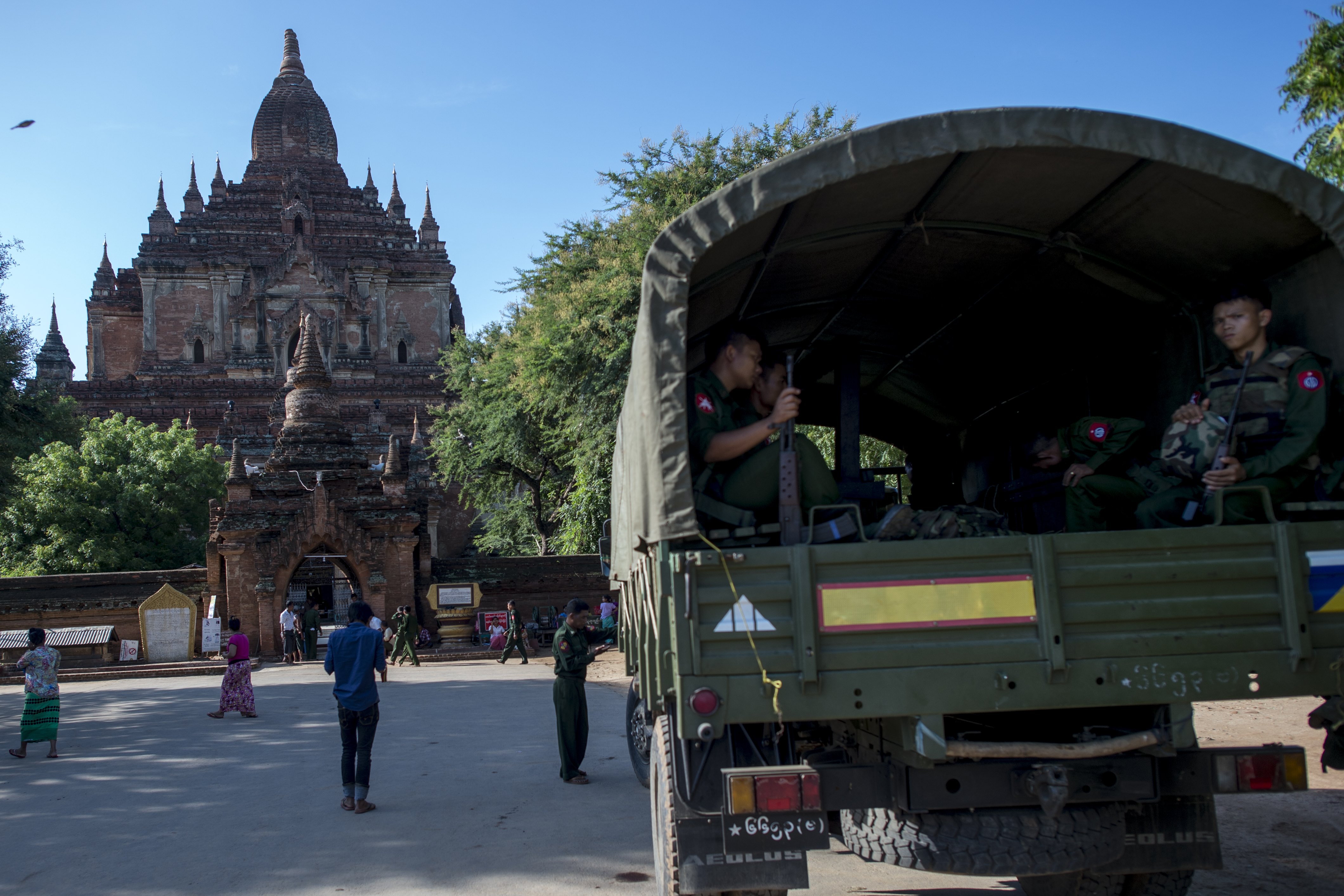
A powerful 6.8 magnitude earthquake struck central Myanmar on August 24, killing at least three people and damaging nearly 200 pagodas in the famous ancient capital of Bagan, officials said. The quake, which the US Geological Survey said hit at a depth of 84 kilometres (52 miles), was also felt across neighbouring Thailand, India and Bangladesh, sending panicked residents rushing onto the streets. / AFP PHOTO /
by Phyo Hein KYAW
YANGON, Myanmar (AFP) — Officials picked through the wreckage of toppled spires and crumbling temple walls in Myanmar’s ancient capital Bagan Thursday after a powerful earthquake rattled the top tourist destination, leaving three dead.
Clouds of dust settled over the damaged pagodas as officials took stock of the destruction caused by the 6.8 magnitude quake, which struck just south of the famous archaeological site Wednesday, killing two young girls and a man in nearby towns.
Police blocked tourists from entering Bagan’s vast field of some 2,500 Buddhist monuments — among the country’s most venerated religious sites — as workers cleared piles of bricks and swept the grounds.
“I heard sounds after I paid homage at a pagoda. There were foreign tourists there as well,” said Khin Maung Toe, a Myanmar man who was visiting Bagan for the first time when the earthquake struck.
“My wife barely escaped outside as the pagoda collapsed,” he told AFP.
Officials said the quake damaged at least 185 pagodas — many around 1,000 years old — at the site, which is a top attraction for foreign tourists flocking to the country as it emerges from decades of military rule.
The UNESCO office in Yangon, Myanmar’s largest city, has deployed experts to assess the damage, said office head Sardar Umar Alam.
The government is also sending teams from its culture and geology departments, he added.
“It takes time to know how the structures are stabilised and how bad the actual damage is — if a roof collapses, how much it affects different walls and mural paintings,” Alam said.
Bagan’s vast expansive of temple ruins — which make for a staggering sunset vista — have survived wars, earthquakes and centuries of tropical sun.
In its heyday the city, which was the capital of a powerful kingdom from the 9th to 13th centuries, was one of Asia’s most important centres for learning.
Haphazard renovation?
The last major quake to damage the site struck in 1975 and was followed by a controversial restoration effort under the military junta that stepped down in 2011.
Experts said the haphazard renovation work, much of it hastily done with modern materials, significantly altered the original architecture and design of some monuments.
In recent years, as the country undergoes a democratic transition and opens up following decades of isolationist junta rule, UNESCO has worked directly with the government to safeguard the monuments.
Myanmar is eager to see the city listed as a UNESCO World Heritage site.
Travel to the once-cloistered country used to be reserved for the well-heeled and intrepid, prepared to endure the travails of a country under military rule with patchy electricity and limited communications.
But foreign tourists have poured in since the military stepped down in 2011, with many of them making a beeline for Bagan.
This year Myanmar is on track to welcome 5.5 million tourists, nearly a million more than 2015, according to Tint Thwin, director-general of Ministry of Hotels and Tourism.
© 1994-2016 Agence France-Presse







